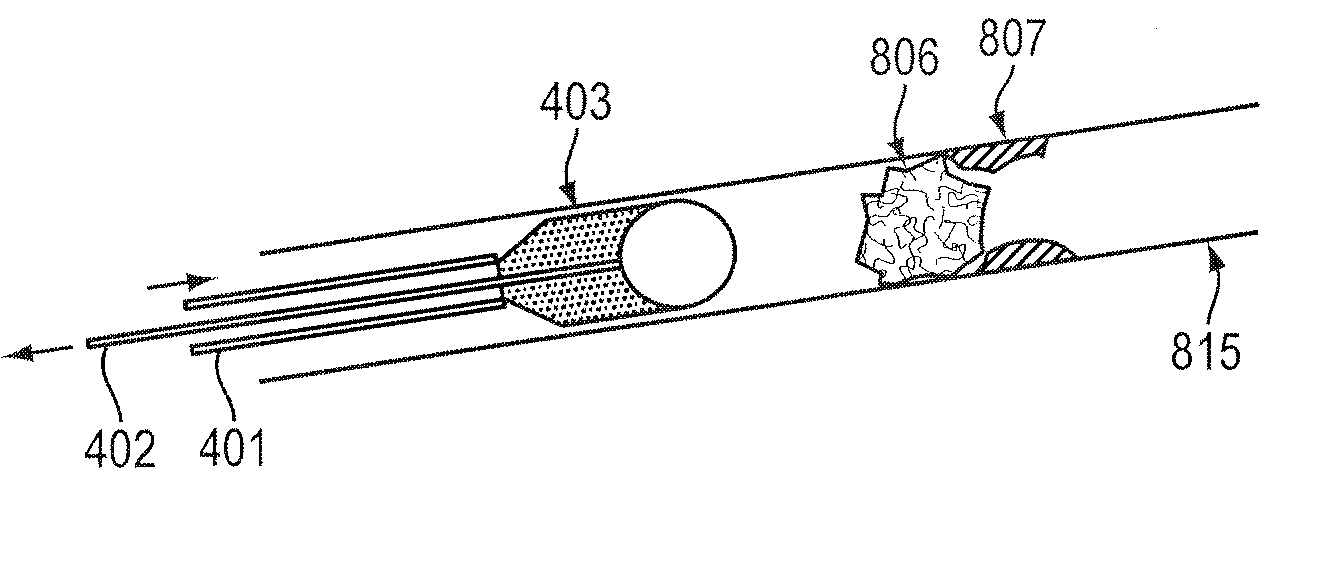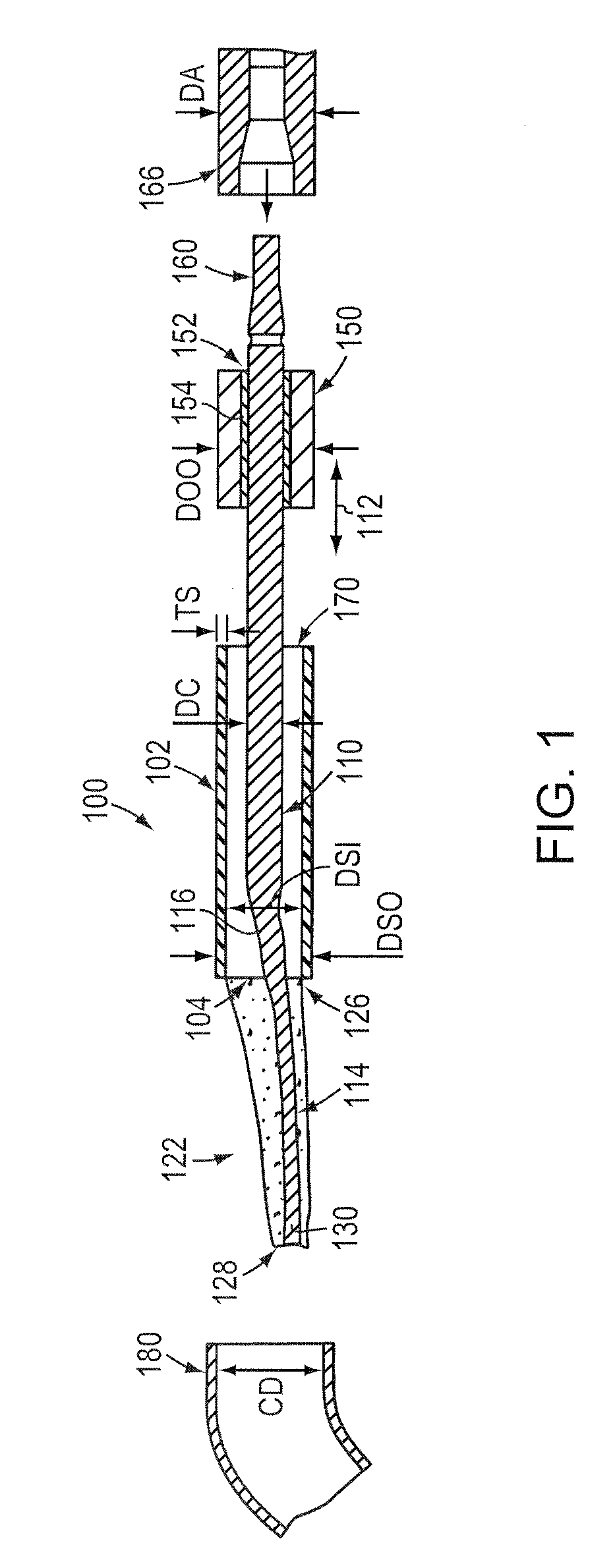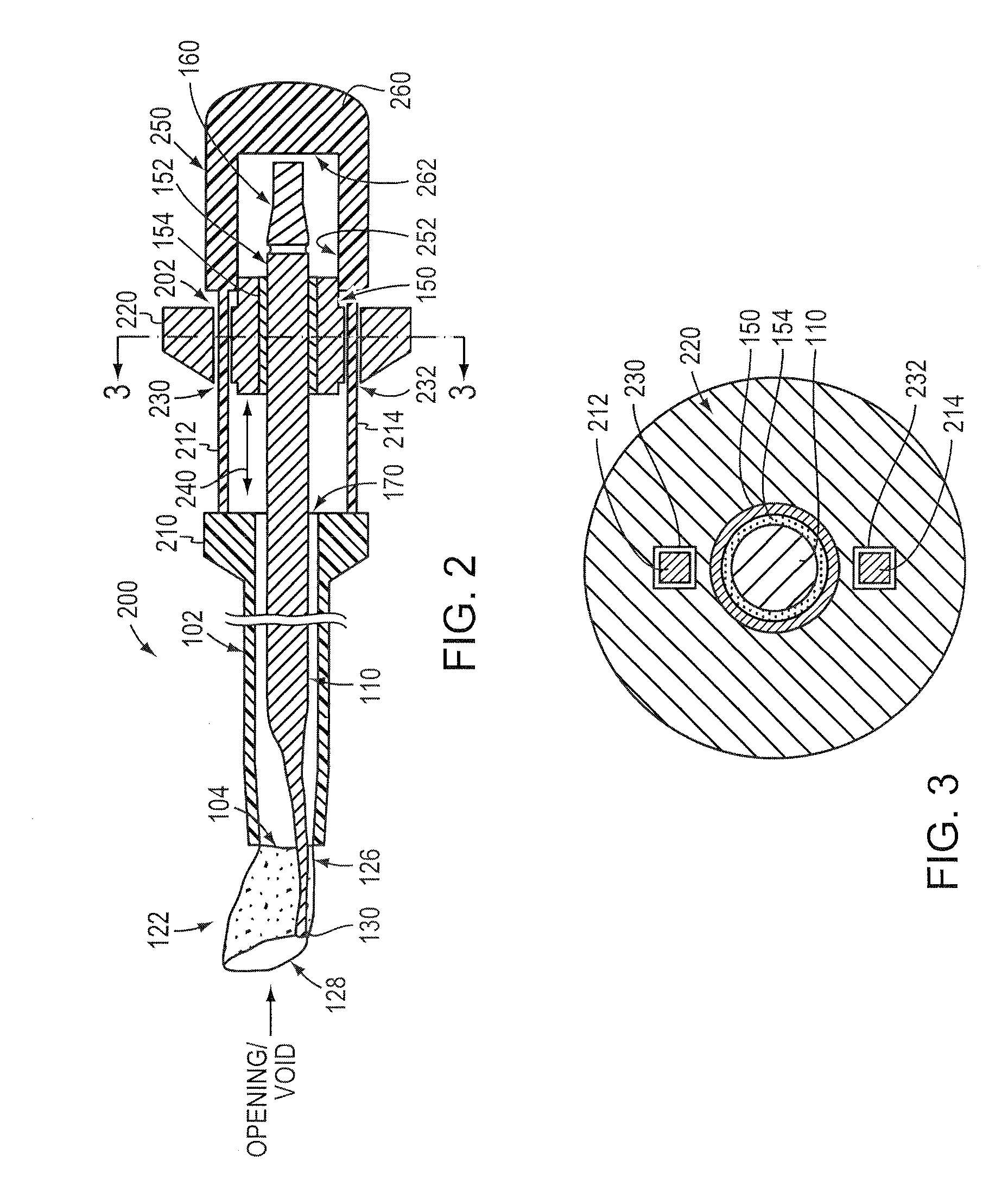System and method for removal of material from a blood vessel
a blood vessel and material technology, applied in the field of surgical catheters, can solve the problems of increasing the overall time and cost of the procedure, exhibiting little or no torque control, and excessive bleeding and/or hematoma, so as to reduce the diameter or cross section, increase flexibility, and maximize the support of the body
- Summary
- Abstract
- Description
- Claims
- Application Information
AI Technical Summary
Benefits of technology
Problems solved by technology
Method used
Image
Examples
Embodiment Construction
[0022]A. Thrombus Retrieval Device and General Design Details
[0023]FIG. 1 shows an example (e.g., small diameter) thrombus retrieval device (or snare device) 100 according to an embodiment of this invention. Illustratively, the device 100 includes of a hollow, elongate, thin-walled polymer outer sheath 102. The sheath 102 may include a radiopaque marker located at or adjacent to the open distal end 104 for visualization under fluoroscopy. The polymer can be any one of a number of acceptable biocompatible polymers with sufficient structural strength to support a thin-walled (approximately 0.0020 inch maximum wall thickness TS) structure without rupture or other failure under normal use conditions. Alternatively or in addition, the thin-walled outer sheath 102 may be made from a metal tube, a metal spring coil with an outer polymer jacket, or a combination of a metal tube proximal portion and a thin-walled polymer tube distal portion (described below).
[0024]In one embodiment, the shea...
PUM
| Property | Measurement | Unit |
|---|---|---|
| thickness | aaaaa | aaaaa |
| thickness | aaaaa | aaaaa |
| thickness | aaaaa | aaaaa |
Abstract
Description
Claims
Application Information
 Login to View More
Login to View More - R&D
- Intellectual Property
- Life Sciences
- Materials
- Tech Scout
- Unparalleled Data Quality
- Higher Quality Content
- 60% Fewer Hallucinations
Browse by: Latest US Patents, China's latest patents, Technical Efficacy Thesaurus, Application Domain, Technology Topic, Popular Technical Reports.
© 2025 PatSnap. All rights reserved.Legal|Privacy policy|Modern Slavery Act Transparency Statement|Sitemap|About US| Contact US: help@patsnap.com



